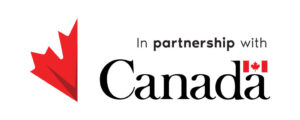Duration: 2023-2025
Location: Afghanistan (Badakhshan, Daikundi, Kunduz, and Takhar provinces)
Reach: 124,123 (68,610 women, 55,513 men)
Budget: $1.5 million CAD (Global Affairs Canada)
Description:
The humanitarian crisis in Afghanistan is among the worst in the world, with an estimated 28.8 million people in need of humanitarian assistance in 2023. Conflict, displacement, food insecurity, economic crisis, natural disaster, and Afghanistan’s recent political upheavals are just some of the factors threatening the immediate and long-term physical, emotional, and social well-being of the Afghan people, with disproportionate impacts on women and children.
These humanitarian needs are also compounded by the reality that only 57% of the Afghan population can reach a health facility within thirty minutes. Access to support is further limited for women and girls, rural populations, and people living in poverty.
This program aims to improve access to life-saving health, nutrition, water, sanitation, and hygiene services to vulnerable populations across four provinces in Afghanistan, with a particular focus on women and girls in remote, conflict-affected, and disaster-affected areas. Activities include, but are not limited to:
- Expanding access to emergency health assistance, community-based nutrition, and mental and psychosocial support and services in remote areas through mobile health teams and community outreach teams.
- Improving access to quality severe acute malnutrition inpatient services through equipment provision, supplies, training, minor rehabilitation, and emergency support for therapeutic feeding units.
- Enhancing knowledge and awareness of community-based health resources, such as community health workers, to provide quality health services for urgent nutrition and mental health through awareness campaigns.
- Providing emergency repair and rehabilitation to 244 existing drinking water points destroyed by natural disasters to ensure access to safe drinking water.
- Providing equipment and training for humanitarian and health assistance during emergencies, including response to disease outbreaks, floods, landslides, and heavy snowfall.

